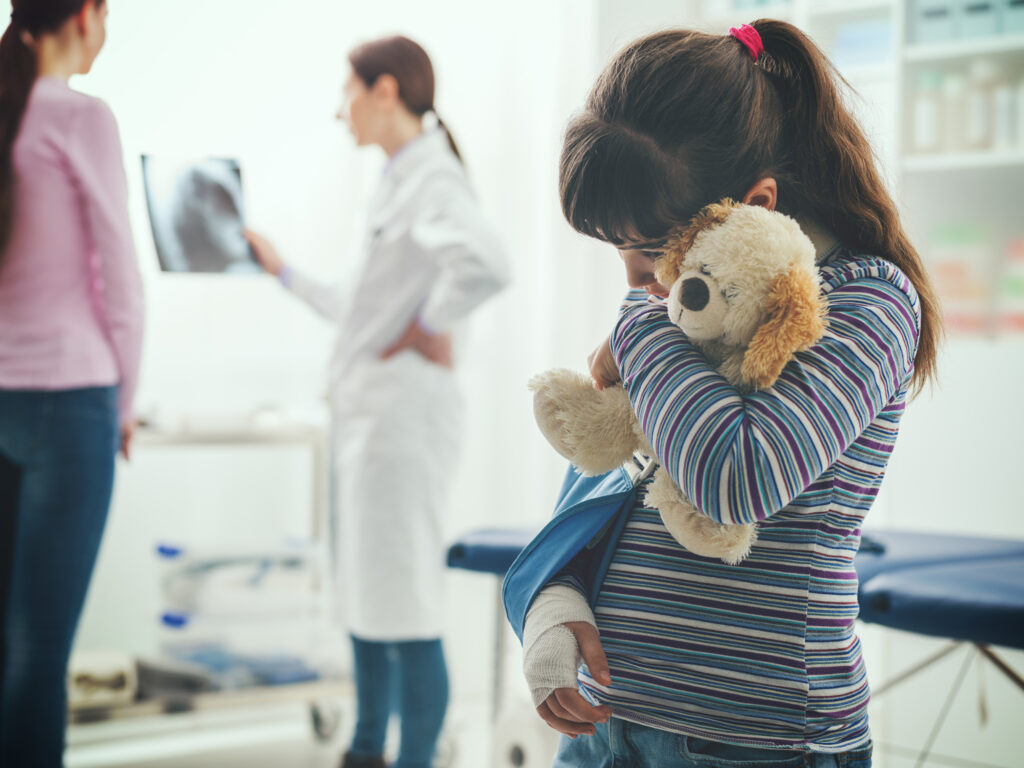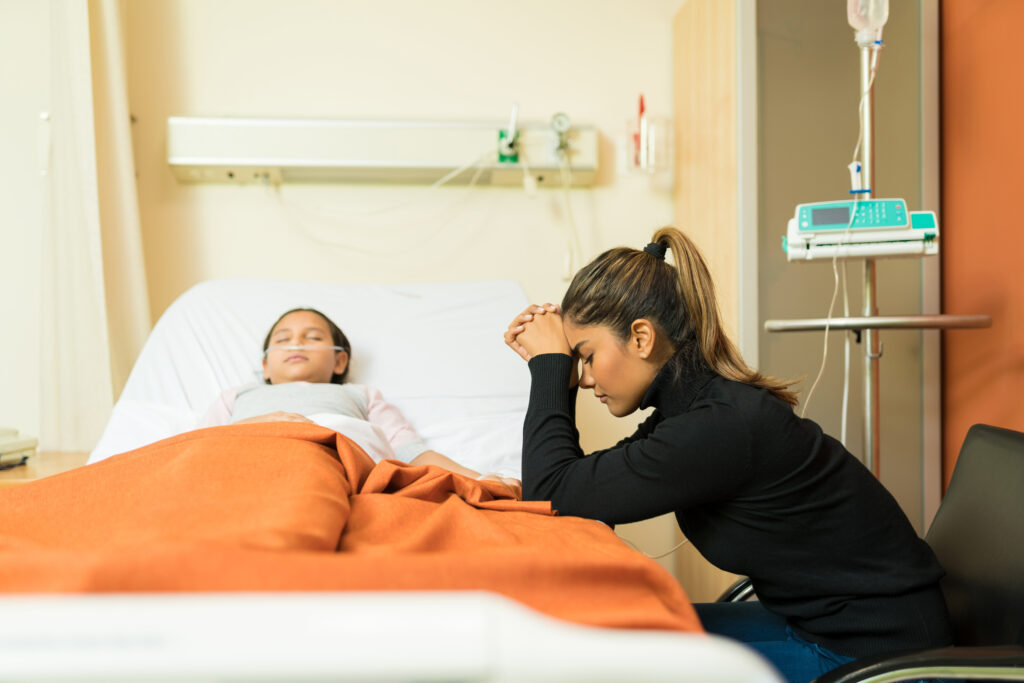
Hundreds of Millions of Dollars Have Been Recovered for Injured Babies and Children
"*" indicates required fields
When your child gets hurt, it’s a feeling like no other. Your heart sinks into your stomach. You feel a sudden, cold dread. You worry. You wonder what comes next. And in that moment, the whole world might feel like it’s spinning out of control. It’s a parent’s worst nightmare, a shock wave that rattles the very foundation of your family. You see their pain, their fear, and you feel utterly helpless.
You hope your child will grow up safe and happy. You teach them. You protect them. You do everything in your power to keep them from harm. But sometimes, despite all your efforts, something terrible happens. A child gets injured, not because they were clumsy or just being a kid, but because someone else made a serious mistake. Someone was careless. A dangerous product was sold without proper warnings. A person wasn’t paying attention when they should have been. When these truly preventable tragedies strike, your child deserves justice. They deserve every single chance at a healthy future, and they deserve full compensation for what they’ve been through and what they will face.
At Child & Birth Injury Lawyers our firm has spent decades sitting with families just like yours, sharing their pain, and fighting tirelessly in courtrooms across the country. We are here to be your unwavering advocate and have been doing so nationally for decades. This isn’t just a guide; it’s an urgent roadmap designed to tell you what to do now to protect your child’s rights and ensure their future.
Remember this very clearly: When a child is seriously injured due to someone else’s fault, their future depends on getting experienced legal help. The sooner you act, the better your chances are of securing the best comprehensive medical care, long-term support, and full compensation your child needs for their suffering. Don’t carry this immense burden alone. If your child has been injured due to someone else’s negligence or mistake, please do not hesitate. Call Jeff Killino and the team at The Child & Birth Injury Lawyers immediately. We have helped families nationwide and are here to fight for your child.

When your child is hurt, the first few hours and days are critical. What you do right away can make a significant difference in their recovery and any potential legal case.
When your child’s injury wasn’t just an accident, but rather due to someone else’s carelessness, that’s where the legal concept of negligence comes in. Negligence means a failure to act with the reasonable caution that a prudent person would use to prevent harm. Our job is to investigate precisely how and why this carelessness led to your child’s injury.

Figuring out who is legally responsible can be complex, but it’s a critical step. Our investigation aims to identify all parties who owed a duty of care to your child and failed in that duty. This could involve:

Acting quickly and decisively after your child’s injury isn’t just about immediate medical needs; it’s about safeguarding their entire future. A serious child injury can have lifelong impacts:
These burdens are immense, and they are why every step you take now is so important.
If your child has been injured due to someone else’s negligence, pursuing a claim is about protecting their right to a healthy, fulfilling future. It’s about securing the resources they will need to live with dignity and thrive despite their challenges. This is where legal action becomes essential.
Our firm serves as your comprehensive roadmap to justice. We handle the complex legal process so you can focus on your child:
When it comes to your child, you need
legal representation that is deeply committed.
When a child is seriously injured due to someone else’s negligence, their future depends on getting the best legal help. The sooner you act, the better. Your child deserves comprehensive medical care, long-term support, and full compensation for their suffering. Don’t carry this immense burden alone. If your child has been injured due to someone else’s negligence or mistake, please do not hesitate. Call Jeff Killino and the team at The Child & Birth Injury Lawyers immediately. We are here to fight for your child.
Catastrophic child and birth injuries can shatter the lives of not just the babies and children, but also their families. Families are left to navigate a complex maze of medical challenges, financial burdens, and emotional turmoil. But, this is where Jeffrey Killino and his team of dedicated lawyers can provide the support and guidance families need most.
This is a great question, and it’s a big worry for many parents. But here’s the good news: You don’t pay us anything upfront! Child & Birth Injury Lawyers operate on a contingency fee basis. This means:
Contact Jeff Killino and the team at Child & Birth Injury Lawyers to discuss your child’s case at no cost.
Every case is different! Some simple cases with minor injuries might get settled in a few months. But cases involving serious injuries, especially if they affect a child’s brain or mean they need care for a long time, can take one to several years. Sometimes, it takes longer because we need to wait to see how your child truly heals. We need to know what their future needs will be. Our primary goal is always to ensure your child receives the full and fair compensation they need, not just a quick payment. We won’t rush a case if it means not getting your child everything they need for their whole life.
Many parents worry about this. However, the truth is that it’s unlikely your child will have to attend a full trial in court. Most child injury cases (approximately 95% of personal injury cases) are generally settled outside of court. This means we work out a deal with the other side’s insurance company or lawyers. If your child is very young, they almost certainly won’t have to go. If they are older, they might be asked to give a “deposition.” That’s when they answer questions under oath with a lawyer present, but it typically occurs in an office, not a courtroom. We prepare children very carefully for this. Our goal is to protect your child from more stress.
When your child is hurt, “damages” is the legal word for the money they can get to cover all their losses and suffering. For a child, this amount can be very large indeed. Why? Because their injury impacts their entire life. Not just today, but for many, many years to come. This money covers things like:
Loss of Enjoyment of Life: For hobbies, sports, and fun they miss out on. We fight for every single one of these costs. Call Jeff Killino and the team at Child & Birth Injury Lawyers to talk about what money your child might deserve.
This is a common question, especially when kids are playing. The law understands that children are not adults. They don’t always understand danger in the same way. Many jurisdictions have rules that state a child’s “fault” depends on their age and level of understanding. A 5-year-old might not be judged the same way as a 15-year-old. Even if your child was partly at fault, you might still be able to be compensated for your injury. The amount could be reduced, though. It’s very important to discuss this with our Child & Birth Injury Lawyers who know child injury law. Don’t assume you can’t get help.
If the person who caused the injury (such as a driver or homeowner) doesn’t have insurance, it can make obtaining compensation more difficult. However, there might be other ways. Sometimes, other individuals or organizations may also be responsible. We will explore all possible ways to provide your child with money. Please contact our team at Child & Birth Injury Lawyers so we can explore all available options.
This is a significant concern for families, as bills can accumulate quickly. Often, your family’s health insurance, whether private, Medicaid, or CHIP, will cover initial medical bills. We will work with you to understand your options and try to make sure your child gets the medical care they need without you having to pay everything out of pocket right away. Money for medical bills is usually sought as part of the total lawsuit settlement.
Parents trust schools and daycares to keep children safe. When a child gets hurt there, it’s often because of negligent supervision (not enough adults watching, or adults not paying attention), unsafe equipment, or unsafe places. Schools and daycares have a legal duty to provide a safe environment. If they fail in that duty, they can be held responsible. For instance, a significant percentage of daycare facilities are cited for violations related to inadequate supervision annually. We can investigate what happened and whether the school or daycare was careless. Call Jeff Killino and the team at Child & Birth Injury Lawyers to discuss what happened at school or daycare.
We buy toys and products thinking they are safe. But sometimes, they are made with hidden dangers, or they break easily. This is referred to as a “defective product.” If a toy breaks and causes a child to choke, or a dresser falls over and hurts a child, the company that made or sold that product can be held responsible. This falls under a specialized area of law known as “product liability.” Companies have a duty to make safe products. Contact Jeff Killino and the team at Child & Birth Injury Lawyers if a defective product injures your child.
Dog bites can be scary and cause serious injuries, especially to children’s faces. The dog owner is often responsible if their dog bites your child, especially if they knew their dog was aggressive or failed to control it. Children are the most common victims of dog bites, and over half of dog bite injuries in children occur on the head and neck. These injuries can leave lasting physical and emotional scars. We can help you hold the dog owner responsible.
This is a very, very critical point: there are time limits for filing lawsuits. These are referred to as “Statutes of Limitations.” If you wait too long, you could lose your right to bring a claim, no matter how strong your case is. It’s like a deadline. Acting early is ALWAYS critical! Evidence can get lost, and memories can fade. Therefore, please contact Jeff Killino and the team at Child & Birth Injury Lawyers immediately.
The legal system is very complicated. Insurance companies employ numerous lawyers. They do not work for you. They work to pay out as little money as possible. Our experienced child injury lawyers can protect your child’s rights. We know the laws. We know how to gather evidence. We know how to communicate effectively with insurance companies. We fight to ensure your child receives the full amount of money they need, not just what the insurance company is willing to offer. We understand the long-term impacts of child injuries, which often require millions in lifetime care. We can get you that justice.
Brain injuries, even “mild” concussions, are incredibly serious for children because their brains are still growing. A serious brain injury can affect a child’s learning, walking, talking, and behavior for their whole life. These cases are extremely complex and expensive. The lifetime cost of care for a child with a severe brain injury can easily reach $3 million to $ 50 million. You need a lawyer who understands brain injuries deeply, knows the medical experts, and can fight for this lifelong care. Jeff Killino and the team at Child & Birth Injury Lawyers handle these very complex cases.
This is when a doctor, nurse, or hospital makes a careless mistake that hurts your child. It could occur during birth or at any time a child receives medical care. These cases are extremely difficult to win because medical professionals have certain advantages in litigation. You need a lawyer who is thoroughly familiar with medical law. For example, pediatric patients are three times more likely to experience a medication error compared to adults. Jeff Killino and the team at Child & Birth Injury Lawyers have specific experience in medical malpractice and birth injury cases. We know how to identify and correct those mistakes.
To build a strong case, we need a substantial amount of evidence. A significant part of the case includes all your child’s medical records, such as hospital notes, doctor visits, therapy reports, X-rays, and MRI scans. Also, any photos or videos of the accident scene, your child’s injuries, or the dangerous item. We also need accident reports (police reports), and names and contact info for any witnesses who saw what happened. Don’t worry if you don’t have everything; we will help gather it all.
Car accidents are a leading cause of injury and death for children. If your child was hurt in a car crash, whether they were a passenger, on a bike, or walking, and another driver was at fault, we can help. Drivers have a duty to be careful. If they were speeding, texting, or distracted, they can be held responsible. We investigate crashes very carefully. We fight for children hurt in these crashes.
Property owners have a duty to maintain the safety of their land and buildings. If your child was hurt because of a dangerous condition on someone else’s property – like a broken railing, a slippery floor, an unfenced pool, or a dangerous playground – the owner might be responsible. This is called “premises liability.” Even if your child wasn’t supposed to be there, special rules known as “attractive nuisance” may protect children. We investigate all these situations.
This is the most challenging type of case, but it’s essential to know that legal assistance is available. When a child is harmed by neglect (lack of care) or abuse (intentional harm) by someone who should protect them, they can pursue a civil lawsuit. This is separate from any police investigation. These cases seek money for the deep physical and emotional scars caused. In a single year, over 600,000 children are confirmed victims of child abuse and neglect in the U.S.. We help families find justice when this unthinkable betrayal happens.
This is the most tragic situation imaginable. If your child passes away due to someone else’s carelessness or wrongdoing, it’s called a “wrongful death.” While no amount of money can ever bring your child back, a wrongful death claim seeks to hold the responsible parties accountable. It can provide financial support for funeral expenses, medical bills incurred before death, and compensation for your family’s profound emotional suffering and loss. Jeff Killino and the team at Child & Birth Injury Lawyers handle these heartbreaking cases with immense compassion and understanding.
Text With Us
We'll text you!
"*" indicates required fields
By submitting, you agree to be contacted about your request & other information using automated technology. Message frequency varies. Msg & data rates may apply. Text STOP to cancel. Privacy Policy
Call Me
We'll call you!
"*" indicates required fields
By submitting, you agree to be contacted about your request & other information using automated technology. Message frequency varies. Msg & data rates may apply. Text STOP to cancel. Privacy Policy
Book A Consultation
We're ready to answer your questions!
Email Us
We're available by email!
"*" indicates required fields
By submitting, you agree to be contacted about your request & other information using automated technology. Message frequency varies. Msg & data rates may apply. Text STOP to cancel. Privacy Policy
Text With Us
We'll text you!
"*" indicates required fields
By submitting, you agree to be contacted about your request & other information using automated technology. Message frequency varies. Msg & data rates may apply. Text STOP to cancel. Privacy Policy
Call Me
We'll call you!
"*" indicates required fields
By submitting, you agree to be contacted about your request & other information using automated technology. Message frequency varies. Msg & data rates may apply. Text STOP to cancel. Privacy Policy